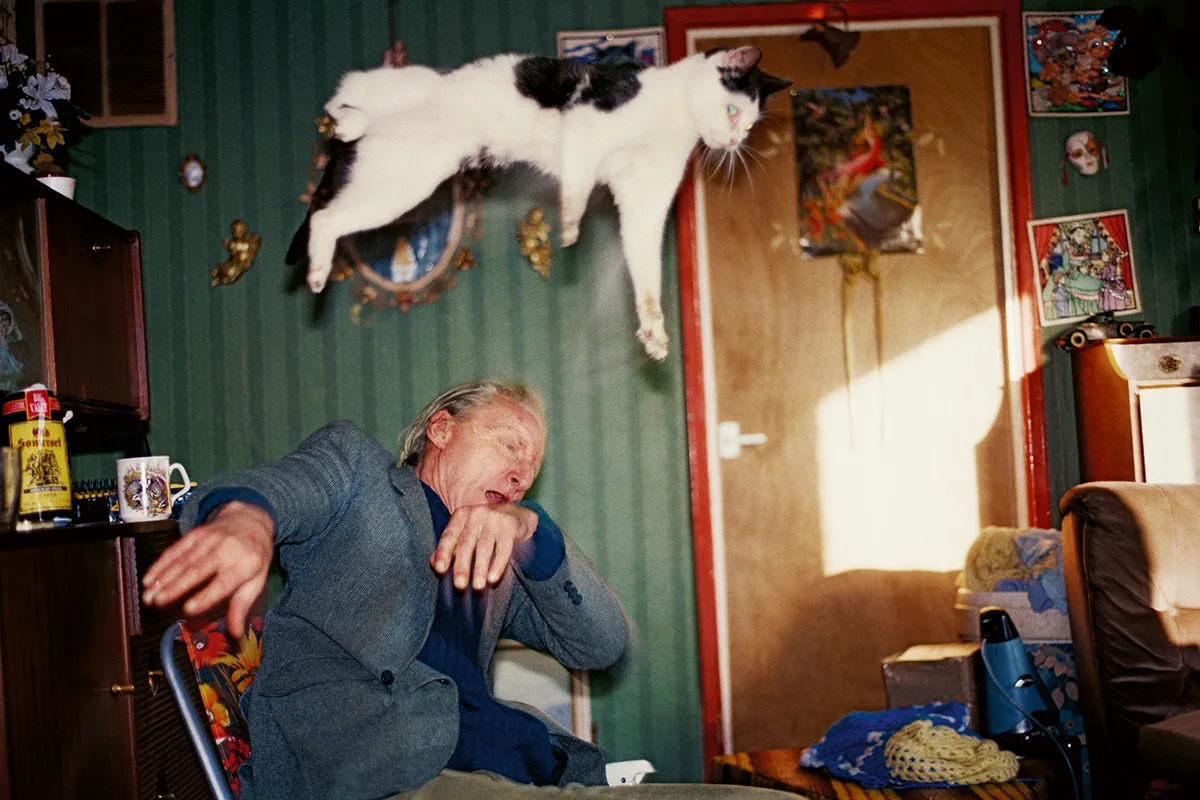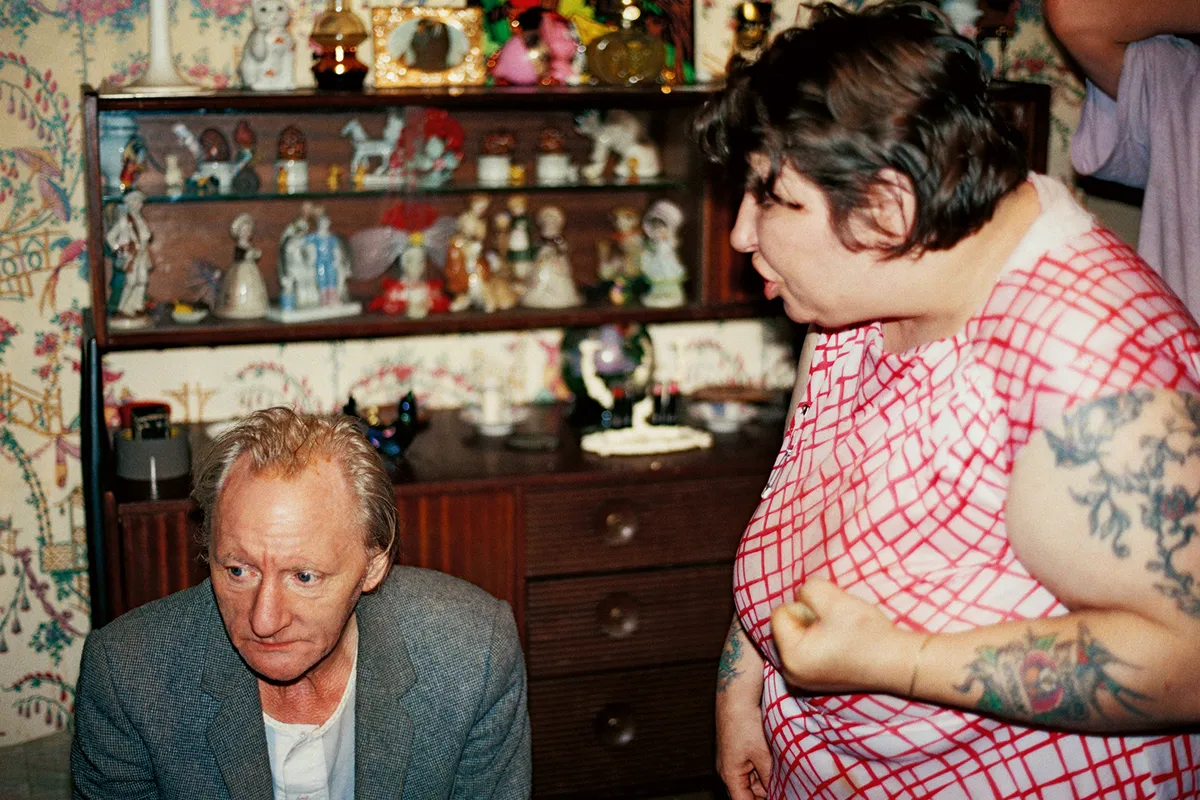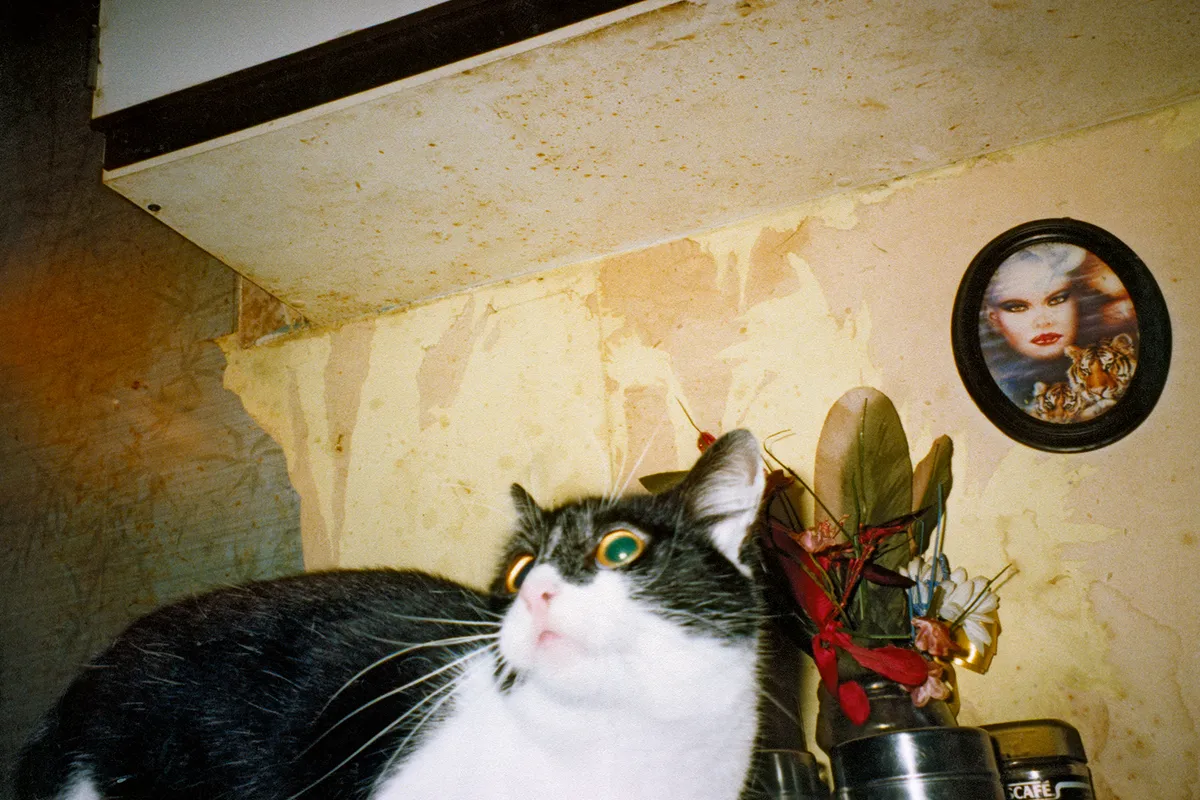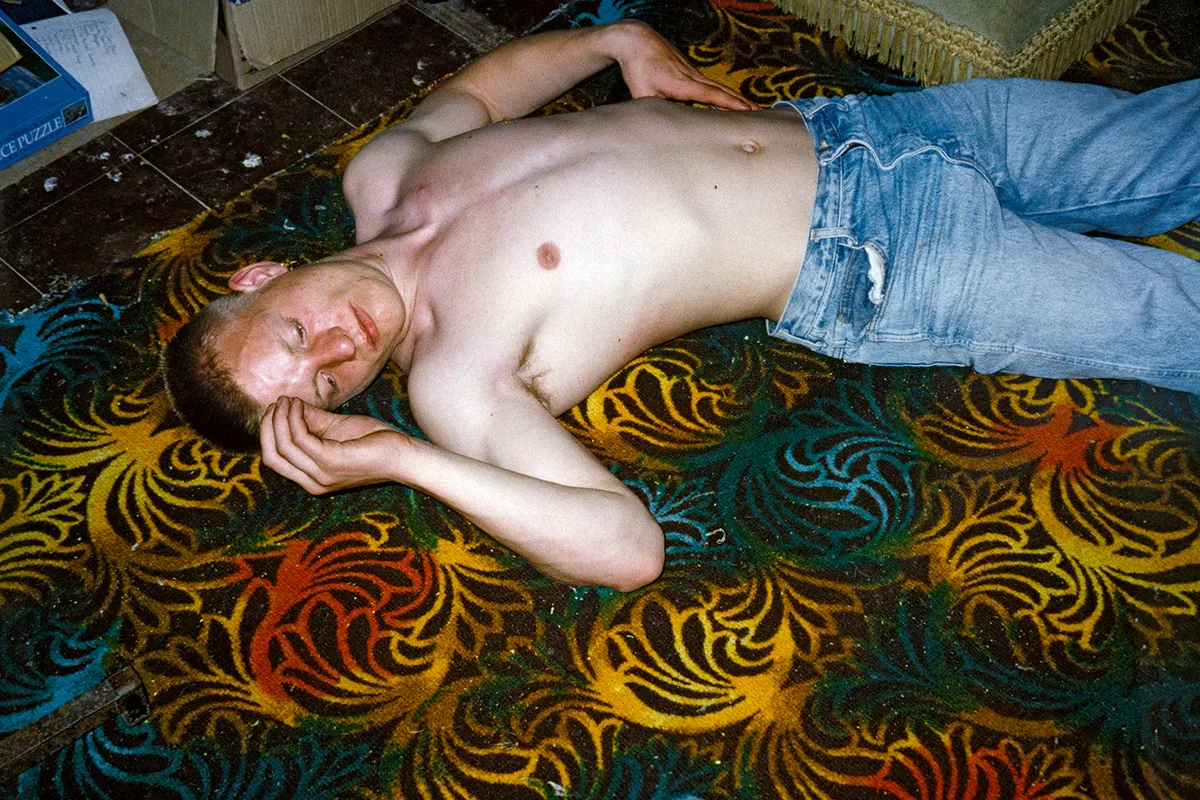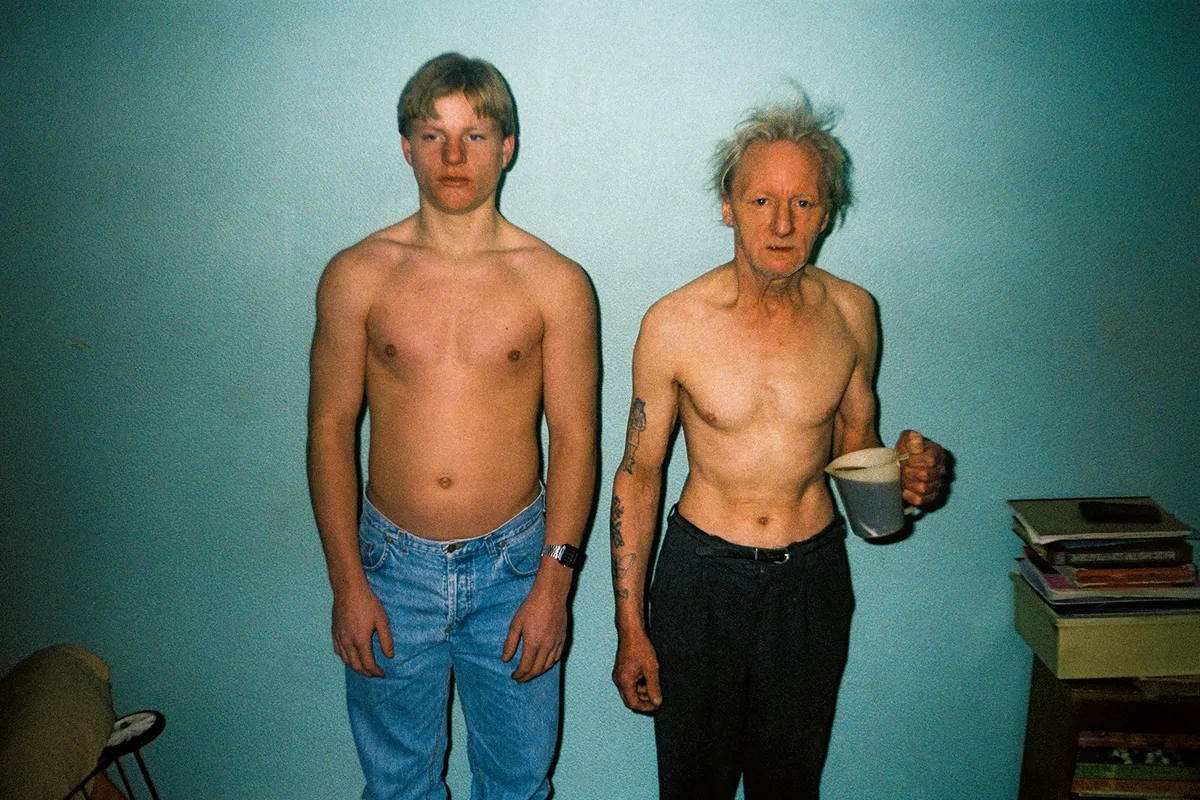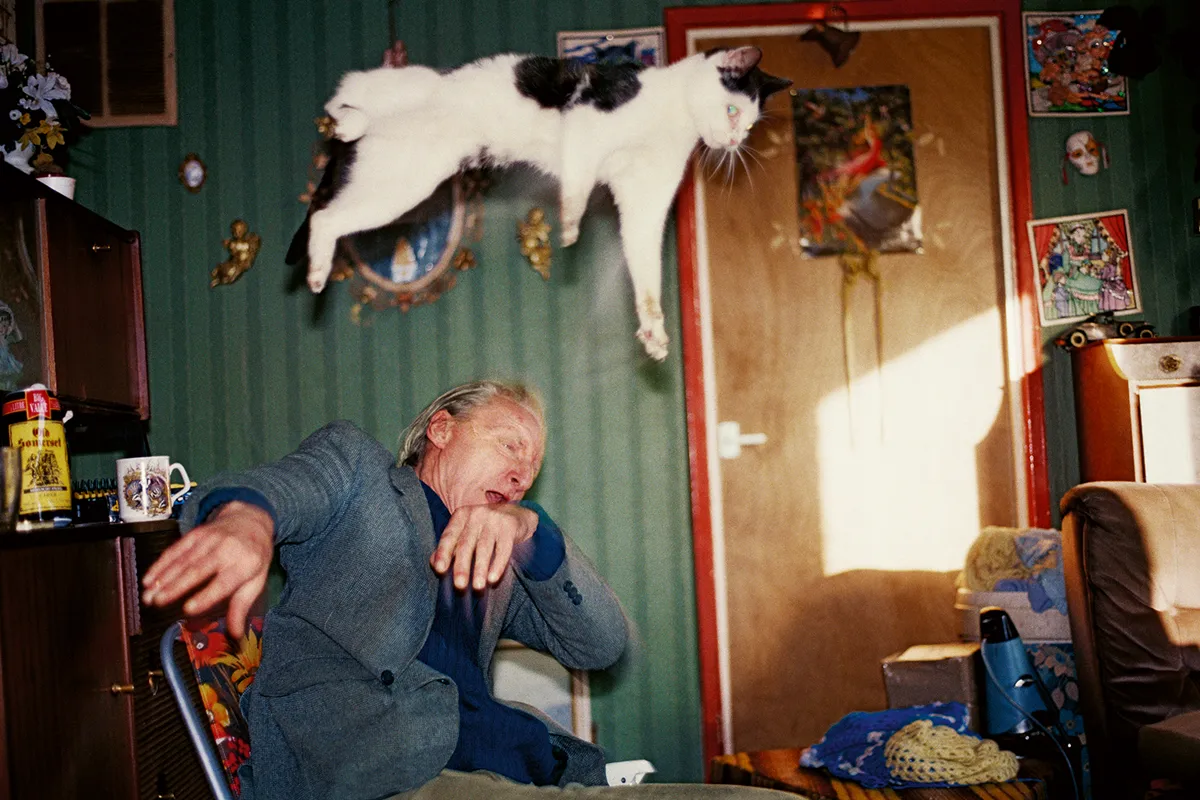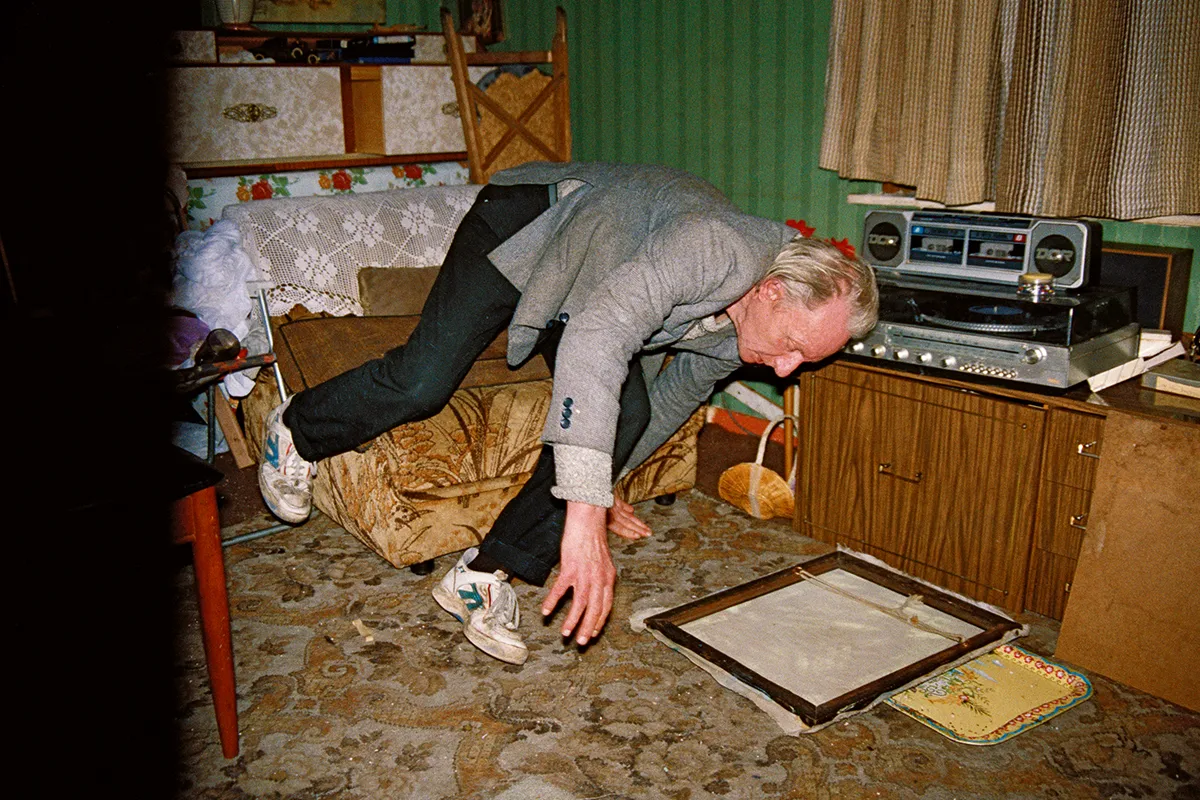The analog photography and the intellectual irony of Richard Billingham reflects the crudeness of a youth spent under the weight of alcoholism and poverty in the Black Country
Ray’s a Laugh: an unconventional family portrait
We all keep in some drawer, or more recently on our cell phones, childhood memories crystallized in photographs with faded colors and blurred edges. Amateur shots that somehow remind us of who we are and where we come from, and which we often contemplate with a feeling of tenderness mixed with nostalgia. In fact, photographs tend to preserve the good, leaving pain and sorrow in a hidden corner of our mind.
But this is certainly not what happens in Ray’s a Laugh by Richard Billingham, a photographic book which portrays with raw realism the living conditions of a British working-class family in the early 90’s. A collection of analog photographs on cheap film which reveal the unstable upbringing of one of the greatest British photographers of our times.
The new edition of Ray’s a Laugh by Richard Billingham
Produced in the 90’s with editors Michael Collins and Julian Germain and first published in 1996, Ray’s a Laugh has recently been re-edited, enhancing the artist’s original vision for the first time. Among the 75 images distributed over 112 pages, there are unseen shots which provide readers with an honest 360-degree portrait of his troubled family life.
Billingham’s new imprint on the second edition of the book is a sort of director’s cut highlighting his distinct approach to sequencing inflected by his training as a painter. The publication is accompanied by Ray’s a Laugh: A Reader, edited by Liz Jobey, which traces the book’s compelling history from Billingham’s discovery at Sunderland University, through his Turner Prize nomination, to the present reworked edition.
Intellectual irony –Richard Billingham’s troubled domestic environment: the context for Ray’s a Laugh
There is no doubt that it takes a good dose of courage and acute intellectual irony to expose the fragility and gray areas of one’s family in such an honest way. Qualities that Billingham does not lack and which he has been able to use to his advantage, making them an integral part of his original visual language. Some of the situations portrayed by Billingham are extremely disturbing; first and foremost, the one that sees his father Ray – hence the title of the book – clearly drunk, collapsed next to the toilet.
Most of the shots portray his parents – Ray and Liz – under the heavy effects of his father’s alcoholism and poverty in their home in Cradley Heath. Yet Billingham’s intent is certainly not to solicit public compassion. The artist himself admitted that initially the photographs would have served as the basis for a series of paintings, but due to their power and roughness he decided to make them the true protagonists of his own family visual history.
The squalid realism of Richard Billingham and his intellectual irony
Billingham recorded everything which happened in his household: meals, moments of relaxation, arguments, and details of a derelict house, amidst rubbish and disorder; all treated with a biting intellectual irony. But also, moments of desperate tenderness and affection between Ray and Liz, and between his parents and his younger brother Jason. Even the aesthetics of the images – blurry, overexposed, illuminated by the flash, with an extremely grainy print quality – reflects the intent of the photographer, who ignores the formal stylistic aspects to favor the immediacy of the action.
Billingham’s ability to translate his messy upbringing into images and, twenty years later, into a feature film titled Ray & Liz (2018), earned him the name of pioneer of “squalid realism”. A term referring to a certain forthright aesthetic, paraphras too crude and too unfamiliar for the critics, but capable of conveying the discomfort of an entire social class.
Ray’s a Laugh: from the low-key town of Cradley Heath to Charles Saatchi’s collection
The first Billingham’s shots had his father as their only subject. Back then, Ray was enduring a particularly difficult period of his life. Liz had left a year earlier and, as Billingham said, he used to spend entire days in his room looking out of the window or listening to the radio. And of course, drinking. A couple of years later his mother returned along with her many cats and dogs, and Billingham, who was studying art at the University of Sunderland at the time, decided to continue documenting his household’s daily life.
It was one of his tutors at Sunderland who discovered his shots, some of which were purchased soon after by Charles Saatchi and included in the YBA Sensation show of 1997. Since then, they have been exhibited around the world and, through the book, entered the homes of thousands of people who found themselves face to face with Billingham’s claustrophobic and disquieting family reality.
The squalid realism behind Ray’s a Laugh and the Young British Artists generation
Ray’s a Laugh is a cornerstone work of the Young British Artists generation, thanks to the inclusion in Charles Saatchi’s YBA Sensation exhibition. Although he was not a graduate of the Goldsmiths College, London, unlike most of the movement’s exponents, his “squalid realism” fit into the refreshing new visions of contemporary life of the YBA generation.
These artists have had the merit of reviving the British art scene with a multidisciplinary, bold, and often controversial creative approach. Nonetheless, many of them went from being anti-establishment artists to true mainstream icons, gaining institutional recognition and being nominated for prizes such the Turner Prize, like Billingham himself in 2001.
Richard Billingham’s investigation of UK’s working-class context through analog photography
Billingham is an eclectic personality: photographer, artist, filmmaker, and art teacher. With his frank and raw photographic practice, he influenced an entire generation of artists; firstly, with Ray’s a Laugh and then with other publications such as Black Country (2003) and Zoo (2007). Focusing on the social and economic fabric of the working class of the West Midlands, Billingham has carried out a careful visual investigation – sometimes taking on sociological contours – drawing from the context in which he was born and raised.
In Black Country – the name by which the West Midlands is commonly known, due to industrial pollution which used to cover the area in black soot in the 1800s -, he focuses on the squalor of his hometown shrouded in the darkness of the night and the artificial lights of the streetlamps. Zoo is the result of numerous trips around the world photographing caged animals, an interest born in a rare break from the monotony of poverty, when his mum took him by bus to Dudley Zoo when he was a kid.
Ray’s a Laugh by Richard Billingham – the intellectual irony behind analog photography
After almost twenty years, the artistic and sociological value of this ground-breaking publication has not diminished. Ray, tried by an immoderate lifestyle, and Liz, with stained teeth and cigarette in hand, are examples of dissolute parenting. While Billingham’s family home in Cradley Heath is the epitome of a life spent on the margins of society.
On the other hand, Billingham – now a father and husband – demonstrates that redemption is possible, that what we have been does not necessarily determine what we can be. In Ray’s a Laugh, the artist recounts without rhetoric and with his unmistakable intellectual irony, a social context which is much more widespread than one might think, providing the international audience with a raw but desperately tender family tale.
Richard Billingham’s analog photography
Richard Billingham (b. 1970) is an English photographer, artist, filmmaker, and art teacher. Billingham’s publications include Ray’s A Laugh (1996), Black Country (2003), Zoo (2007), and Landscapes, 2001–2003 (2008). He has made several short films, including Fishtank (1998) and Ray (2016). Billingham adapted the latter into his first feature film, Ray & Liz (2018), a BAFTA-nominated memoir of his childhood. He won the 1997 Citibank Private Bank Photography Prize (now the Deutsche Börse Photography Prize) and was shortlisted for the 2001 Turner Prize. His work is held in the permanent collections of Tate, the Victoria and Albert Museum, and Government Art Collection in London.


